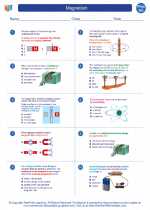Tectonic Movements
Tectonic movements refer to the large-scale movements of the Earth's lithosphere, which are driven by the forces associated with the motion of the Earth's mantle. These movements result in the formation of geological features such as mountains, valleys, and earthquakes. Understanding tectonic movements is crucial for understanding the dynamic nature of the Earth's surface and its impact on the environment.
Types of Tectonic Movements
There are three main types of tectonic movements:
- Divergent Boundaries: These occur when two tectonic plates move away from each other, leading to the formation of new oceanic crust and rift valleys.
- Convergent Boundaries: These occur when two tectonic plates move towards each other, leading to the formation of mountain ranges, subduction zones, and volcanic activity.
- Transform Boundaries: These occur when two tectonic plates slide past each other horizontally, leading to earthquakes and the formation of strike-slip faults.
Impact of Tectonic Movements
Tectonic movements have a significant impact on the Earth's surface and its inhabitants. They can cause natural disasters such as earthquakes, tsunamis, and volcanic eruptions, and also play a crucial role in the formation of natural resources such as oil, gas, and minerals. Understanding these movements is essential for predicting and mitigating the potential risks associated with them.
Study Guide
To study tectonic movements effectively, consider the following key points:
- Learn about the structure of the Earth's interior and the composition of the lithosphere and asthenosphere.
- Understand the theory of plate tectonics and the evidence supporting it, including the distribution of earthquakes and volcanoes, the magnetic striping of the ocean floor, and the movement of tectonic plates.
- Explore the mechanisms driving tectonic movements, such as mantle convection, slab pull, and ridge push.
- Examine the geological features associated with different types of tectonic boundaries, including mid-ocean ridges, subduction zones, and transform faults.
- Investigate the potential hazards and benefits of tectonic movements, including the formation of natural resources, the risk of seismic activity, and the impact on human societies.
By studying these aspects of tectonic movements, you will gain a comprehensive understanding of the dynamic processes shaping the Earth's surface and the implications for the environment and human civilization.
.


